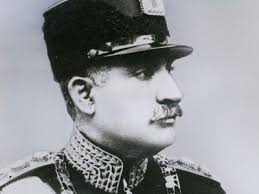In the 70s chaplains came to the Army with graduate degrees
and credentials as Priests, Pastors, or Rabbis from their religions. The chapel system tried to cover every spiritual
need. But the chaplains also recognized their limits. So in the Wiesbaden Military Community in the
1970s, the very proper Colonel in charge of the chaplains in the community
authorized a Gospel service every Sunday night in the main chapel.
The Pastor of the mostly Black congregation on Sunday night was
Sergeant First Class Thomas (I can’t remember his first name). His Sunday night
services were long, loud and a sharp contrast with the United Methodist morning
services.
The choir in the Gospel Service numbered more than fifty,
singing, swaying, clapping and shimmering in blue robes. The service began and
ended with music and prayers. In the middle was a sermon with deep lows,
soaring highs and its own rhythm.
In his office in battalion headquarters of 1st Battalion, 70th Armor, Thomas was the
re-enlistment sergeant. He enlisted in
the early 60s, served two tours in the Vietnam War in infantry if I remember
correctly. He switched to Armor later.
He filled out the endless paperwork required re-enlist. But
the calm, detail-oriented man behind the retention desk was on fire in the
pulpit. He could deliver lines that were
dire warnings in a way that would make me smile even while I felt the cold wind
of condemnation blow in.
He would grab the pulpit with both hands. He would hesitate, look directly at the
congregation, then beginning in a low voice say, “Only your own faith will open
the doors of Heaven. Sittin’ in a garage don’t make you a car, and sittin’ in
this Church don’t make you a Christian! –at this point his volume was close to
max – Only your own personal faith in Jesus will get you into Heaven.”
Another exhortation to personal faith delivered from low to
crescendo ended with “We must be children of God. [Long Pause.] God don’t have
any grandchildren. Your grandma’s faith
won’t get you to Heaven. And don’t you think you are foolin’ that faithful
woman. She knows you need faith, and a whoopin’!”
After Wiesbaden, the next time I went to Black Church was in
the summer of 2007. I was in a neck and
chest brace after a near-fatal bicycle accident. We went to an African
Methodist Episcopal Church in the Lancaster City. My wife and I were two of the
three white people among hundreds of people in the pews. It was a new and
delightful experience for my wife. For me, it was just like the Wiesbaden
Military Community.
A few months before our visit, I made the casual remark to
my wife, quoting SFC Thomas, that 11 a.m. Sunday was the most segregated hour
in America. Soon after, my wife started visiting Black and Latino and other
Churches. They were very different the Presbyterian Church we attended.
As was true in Wiesbaden, the Lancaster preacher illustrated
his sermon with vivid metaphor. But the best and most memorable moment for us
was when the minister called the children to the front of the Church to listen
to a story. He retold the story of the
Good Samaritan as a man shot and left for dead in a side street right near the
Church. A preacher walked past the
bleeding man, a star football player from the neighborhood walked past the man,
and then there was a hush. The preacher told about a man who picked the wounded
man up out of the gutter, took to the emergency room and paid his bill.
Who was this man?
The preacher boomed:
A man from Lititz! Yes, a man from Lititz saved him. The man from Lititz
was truly a neighbor.
The kids clapped. The adults laughed. I thought I was going
to re-break some of my cracked ribs I was laughing so hard. Lititz is the whitest, richest suburb of the
city of Lancaster. A man from Lititz is
the best replica of a Samaritan in that neighborhood.
When the adults calmed down the preacher asked the kids,
“Who is this man’s neighbor?”
After a pause, a little girl said, “The football player.”
Now the preacher was laughing too.
I could imagine SFC Thomas loving that localized story of
the Good Samaritan.













